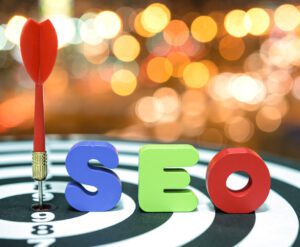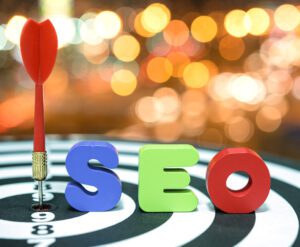Lead generation has become an essential strategy for modern marketers as they strive to create demand and get their messages heard by increasingly sophisticated, multi-channel buyers. In today’s complex environment, marketers use lead generation to increase brand awareness, nurture prospects and customers, qualify leads, and ultimately generate measurable revenue. Lead generation is an ongoing process that necessitates constant optimization and development, so patience and perseverance are essential. With the proper strategy and approach, businesses can generate steady, high-quality leads, propelling their growth and success. In short, it is the process of attracting customers and getting them interested in the products and services your company offers.
There are numerous methods for generating leads, and your chosen strategies will depend heavily on the products and services your company offers to the general public or other businesses. For instance, if you are marketing a visual product, you may prefer to utilize social media marketing, influencers, and your website. Alternatively, if you offer a service, it could be better to choose informative marketing, such as newsletters, emails, and follow-up calls.
This guide will discuss everything you can think of related to lead generation. This Definitive Guide to Lead Generation will teach you how to collect information from prospects across every channel and deliver the highest-quality leads to your sales team.
What is lead generation?
Lead generation is the process of gathering the contact information of individuals interested in your business or product. Typically, a lead passes through a number of stages. It is a method of acclimating prospective customers to your business and preparing them to eventually make a purchase. Job applications, blog posts, vouchers, live events, and online content are all effective methods for generating leads.
These lead generators are merely a few examples of lead generation strategies you can employ to attract potential customers and guide them toward your offers. Without sales prospects, maximizing revenue and expanding your business are challenging. Lead generation fosters relationships, credibility, and trust between your brand and potential customers.
The goal is to generate prospects organically. When consumers initiate a relationship with your organization, the transition from prospect to customer becomes more intuitive. A suitable strategy can attract more prospects to your brand, thereby increasing your revenue.
Why do you need lead generation?
Lead generation is a fundamental aspect of revenue generation. The better your lead generation, the greater your revenue. While starting lead generation, there are a few additional factors to consider:
Expand your market:
Without knowledge of your target audience and market, it is impossible to generate leads. The more you communicate with prospects from your database, the better you will be able to discern who is a potential customer and who is not. This provides a distinct picture of the market segments your marketing efforts should target.
Collect more customer reviews:
The more effectively you organize your lead generation processes, the more clients you gain. It indicates you will be able to collect additional reviews from them. As a consequence, an increased number of website visitors will share their contact information.
Create business opportunities:
You’ll have a good-quality email list if you actively generate leads. This is a compelling argument for forming partnerships with other brands and promoting your products.
When a stranger initiates a relationship with you by expressing a natural interest in your business, transitioning from a stranger to a customer is much more natural. It happens when you have a large group of followers and are prepared to turn those people into leads for your sales team.
How lead generation works: 4-step process overview.
To generate prospects, you must convince individuals to provide their contact information. This is typically the responsibility of your marketing crew. They are responsible for creating content and materials that motivate prospective customers to complete every step of the lead-generation process.
Awareness: The consumer learns about your business through a marketing outlet. They may have read your blog posts, visited your website, or engaged with you on social media.
Call to action: The consumer clicks on a call to action (CTA), typically an image or message encouraging them to do so in exchange for your lead magnet. Your CTA could be a link to downloadable gated content or a prominent “Start a free trial” icon on a website.
Lead capture: When the user clicks on the CTA, they will see the lead capture form, which they must fill out before accessing the lead magnet.
Access: Once the customer fills out the form, they can access the lead magnet. This could be valuable information, such as an ebook or a data report with complete information. The type of offer a prospect pursues can reveal a significant amount about their level of intent. Lead generation becomes essential to the marketing strategy as businesses seek to grow and expand.
The process of generating leads involves identifying potential customers, nurturing them, and converting them into paying clients.
Define your Target Audience.
Before launching any marketing campaign, it’s essential to identify the target audience. This step involves defining the ideal customer based on their demographics, interests, behavior, and needs. Understanding the target audience enables businesses to tailor their marketing messages and offers to the customer’s specific needs, increasing their chances of success.
Develop a Lead Magnet
A lead magnet is an offer businesses provide to potential customers in exchange for their contact information. This could be anything from a free eBook, a discount coupon, or a webinar. The lead magnet needs to be relevant and valuable to the target audience, and it should be easily accessible. Who doesn’t like getting free books, tips, templates, or checklists? Users love this because it gives them a rare chance to get expert knowledge for free, while companies see it as a way to get in touch with more of their target customers.
Use Landing Pages
A landing page is a dedicated page on a website designed to capture the contact information of potential customers. A well-designed landing page should have a clear value proposition, a prominent call-to-action, and a simple form to capture the customer’s contact details. Businesses should create multiple landing pages, each tailored to a specific lead magnet, to maximize the chances of conversion.
Leverage Social Media
Social media is a powerful tool for lead generation. Businesses should leverage social media platforms like Facebook, Twitter, and LinkedIn to engage with potential customers, build relationships, and promote their lead magnets. Maintaining a consistent brand voice and posting relevant and valuable content that resonates with the target audience is crucial.
Implement Email Marketing
Email marketing is an effective way to nurture leads and convert them into paying customers. Businesses should segment their email list based on the customer’s behavior and interests and tailor their messaging to each segment. Personalized emails have a higher open and click-through rate and increase the chances of conversion.
Use Paid Advertising
Paid advertising, such as Google AdWords and Facebook Ads, can quickly generate leads. Businesses should develop targeted ads that speak directly to the target audience’s pain points and provide a solution. Paid advertising should be monitored and optimized to ensure a positive return on investment.
Referral Marketing
Referral marketing, also known as word-of-mouth marketing, contributes to lead generation in a unique manner. In other words, it puts your company in front of more people, which makes it more likely that you’ll get more leads. You must direct people to your landing page no matter what channel you use to get leads.
Monitor and Analyze Results
Finally, continually monitoring and analyzing the lead generation strategy’s results is essential. Businesses should track key metrics such as conversion rates, cost per lead, and return on investment. By analyzing the results, businesses can identify areas for improvement and optimize their lead generation strategy for maximum success.








